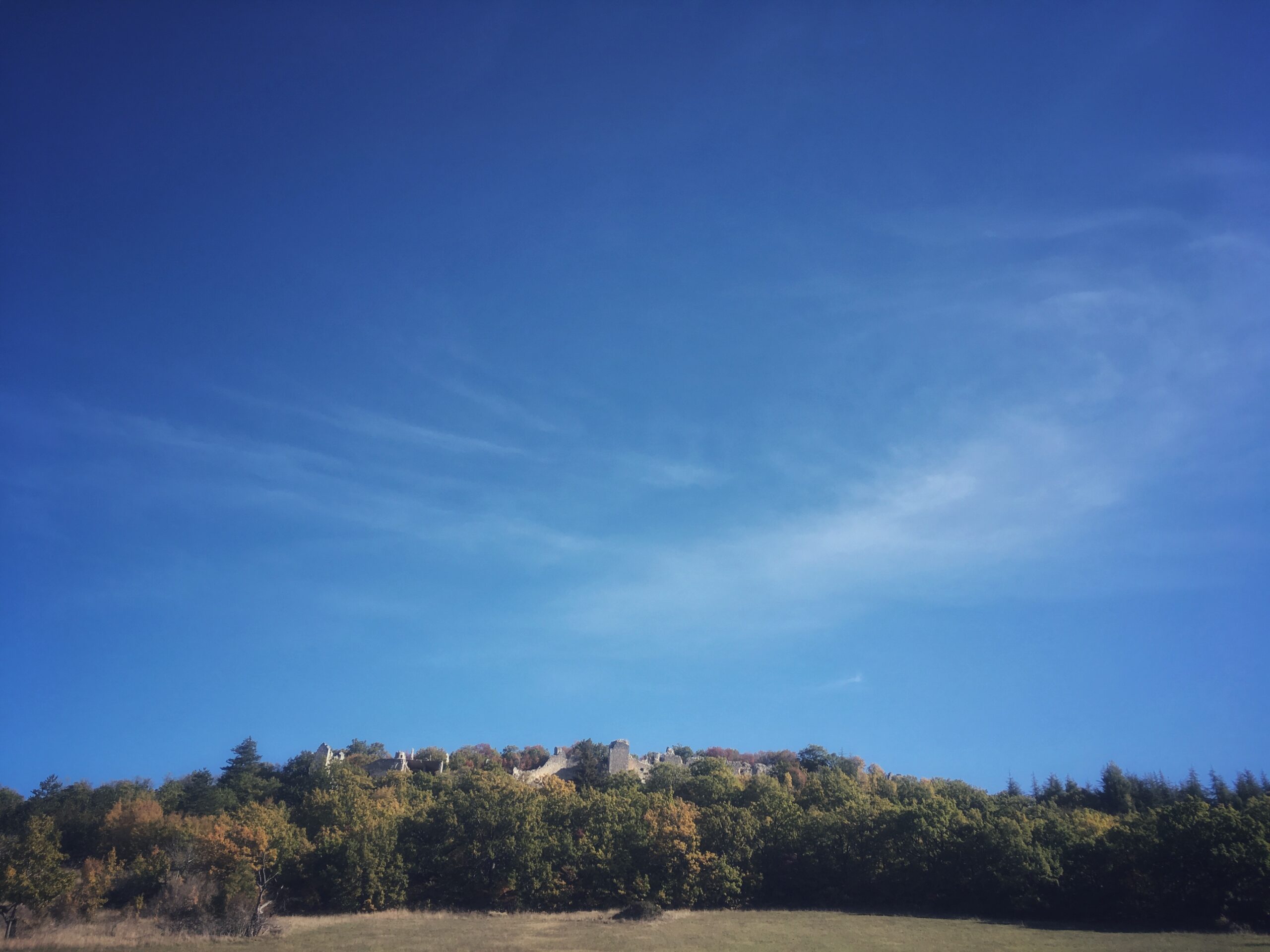History
Upstream from our land, a few hundreds meters away, you can find the ruins of the Castle of Ocre, unfortunately devastated by the earthquake in 2009.
The site of the first smaller fortification (end of 11th century-beginning of 12th), where excavation campaigns have been conducted, is still visible; immediately east of it, there is the monumental structure of the big castle (13th and 14th centuries).
This castle is linked to some famous people, like the great Frederick II, the Stupor Mundi of the Holy Roman Empire – a real character that the Pope even saw as the Antichrist – and to less known but nonetheless important figures, like Braccio da Montone.
We also want to remember the thousands of men, women and children that worked on the adjacent lands and whose lives revolved around this place.
(And now, a real treat for all those who are fond of the Middle Ages: the morphology and settlement typology of the oldest part of the Castle of Ocre is identical to the motte-and-bailey typical of Normandy, especially to the Château d’Olivet in Grimbosq, and the Château Ganne a La Pommeraye (better preserved), both in the Calvados.
We could then assume that at the beginning of 11th century the French knights replicated this specific settlement model in the newly conquered lands in Ocre).


Walking one kilometer north of our land, you can see the Franciscan convent of Sant’Angelo, built at the beginning of 15th century on a rocky spur and wonderfully preserved.
One and a half kilometers south east, lies the Cistercian fortress-monastery of Santo Spirito d’Ocre (beginning of 13th century).
Within a radius of 20 kilometers there are numerous archeological sites of prehistoric, pre-roman, roman and mediaeval age (to name just one, the necropolis of Aveia – nowadays called Fossa – dating from almost 3000 years ago).
Our roommates
The natural environment is intact, peaceful, inhabited by wild animals of all sorts (cervids, wolves, porcupines, badgers, diurnal and nocturnal raptors of numerous species), with oak and maple tree woods and abundant wild plants.
A network of hiking trails connects the Adriatic and the Tirreanean seas, passing through one of the greenest and most intact landscapes in Italy.
The Gran Sasso and Monti della Laga massif – with the spectacular Campo Imperatore plateau, the Velino-Sirente, the Majella and the Abruzzo Lazio and Molise National Park – are places of incredible and easily accessible beauty.
In less than half an hour you can reach the cableway for Campo Imperatore, but also Campo Felice and Ovindoli ski resorts.
It takes one and half hours to get to the centre of Rome; in two hours you can arrive in Spoleto or to the Trabocchi coast or to the Etruscan region of Lazio.
In this area, you can practice an enormous variety of sports: hiking, climbing, ski and ski mountaineering well into spring, mountain bike, downhill, paragliding, bungee jumping, windsurf, gliding, canyoning and much more.
The majestic north face of mount Ocre (2204 mt) stands out above everything.
In a nutshell – awesome!

